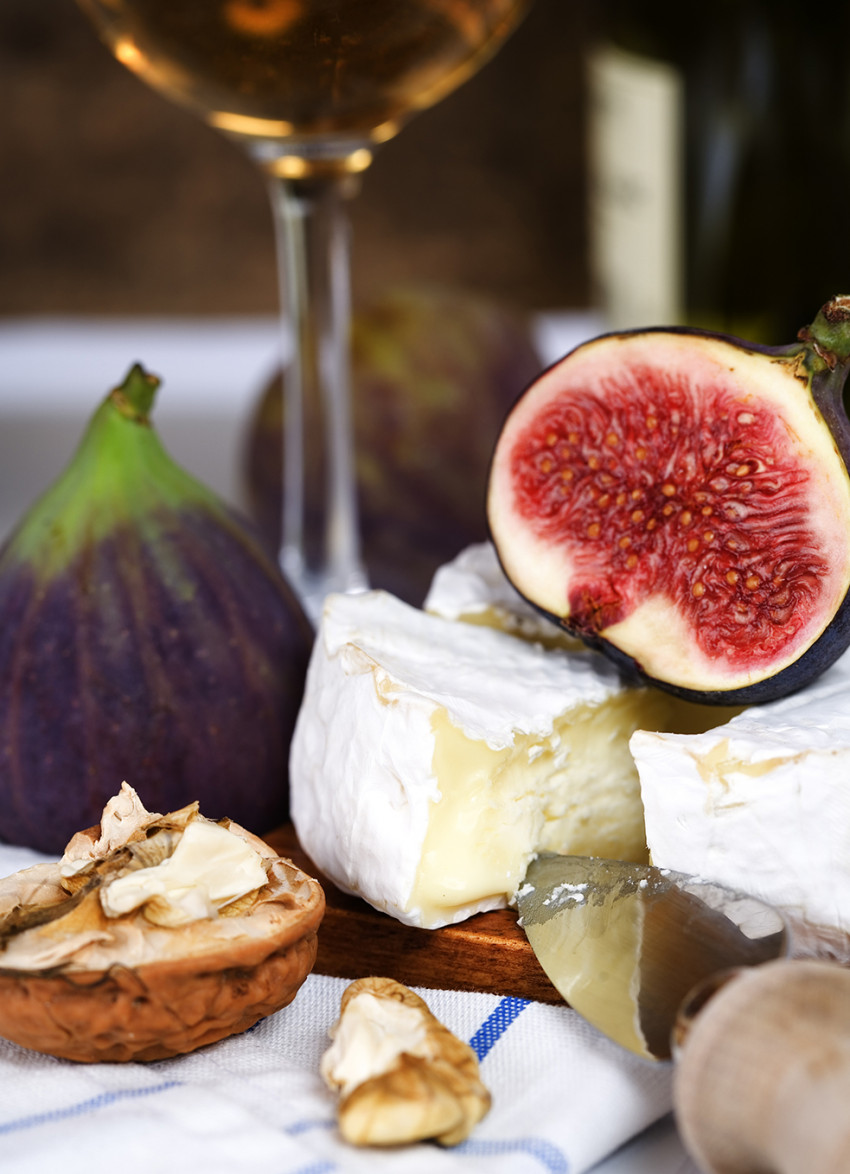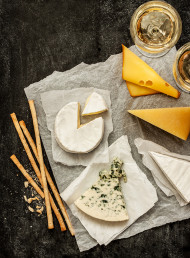Stories of cheese: To brie or not to brie?

That is the question... or maybe the question should be what is a brie since there are so many out there? And the other question is what exactly is the difference between brie and camembert?
Brie is an ancient region south east of Paris that today roughly equates to the Seine-et-Marne area. It was here during the 8th century that the great Emperor of Europe Charlemagne fell in love with a local cheese that became known as the King’s Cheese.
Shortly after the Revolution, the cheese took on the title 'the King of Cheeses.' As word of this delicious cheese spread across Europe, it became known as Brie de Meaux to differentiate it from other similar local cheeses. In 1980, the cheese was granted AOC status (Appellation d'Origine Contrôlée).
The lesser known Brie de Melun AOC, sometimes considered the ancestor of all brie cheeses, takes its name from the plain of Melun and is smaller, stronger, more farmyard and pungent with a salty tang and a colourful rind.
In the hands of some affineurs (people who ripen cheese) brie is encouraged to develop a rind of brown or black moulds, and is called Brie Noir or Black Brie. Brie de Nagis, named after the town revived in the 1980’s by the Rouzaire family, is smaller, creamier and milder than Brie de Meaux and does not have the protection of the AOC labelled.
Outside of France “brie” refers to any cheese that grows a white, furry rind (made of penicillium candidum) regardless of size, shape, place of origin or even milk type.
Truth be told, these cheeses rarely have anything but a hint of mushrooms in common with the King of Cheese and instead should have a name that reflects their unique character or origin.
Now, what exactly differentiates brie from its creamy counterpart, camembert? Camembert de Normandy AOC, comes from Normandy.
Camembert has a distinct white crust and unlike brie, weighs 250grams not 3 kilograms. Camembert tastes like creamy soup made with field mushrooms and a hint of sea breeze. Brie de Meaux tastes like creamy soup made with beef stock and wild mushrooms. Each cheese has its own unique character because of the breed of cows, the moulds and the yeasts – and not to mention the climate – are very different. Cheese, like wine, is a product of the terroir or environment where it has been created – not just what the cheesemaker wants it to be.
When I do tastings, people often struggle to tell the difference between the two. And yet, the difference is as distinct as the difference between a Chablis and a Hawke’s Bay Chardonnay.
They are both amazing and made with the chardonnay grape but each has its own unique flavour and name.
Something to try: Delice de Bourgogne Coupe, Brie Coeur de Lion, Royal Aux Truffes, Brie de Meaux AOC Rouzaire, Brie Truffle Rouzaire, Le Rustique Brie Pointe, Goat's Brie.
To view the full range of La Fromagerie's brie cheeses and Maison Vauron French wines, see their website here.
latest issue:
Issue #120
As the days become shorter, and the nights cooler, the latest issue is perfectly timed to deliver delicious autumn dishes. From recipes using fresh seasonal produce such as feijoas and apples, to spectacular soothing soups and super-quick after-work meals in our Food Fast section, we’ve got you covered. With Easter on the horizon, we feature recipes that will see you through breakfast, lunch and dinner over a leisurely weekend holiday, and whip up chocolatey baking treats sure to please. We round up delicious dinners for two and showcase a hot new Korean cookbook before heading south to Dunedin to check out all that’s new in food and dining.The latest issue of dish is on sale NOW at all good bookstores and supermarkets – don’t miss it!

 BROUGHT TO YOU BY La Fromagerie
BROUGHT TO YOU BY La Fromagerie




